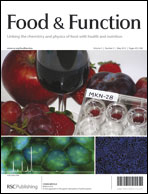Emulsion-based delivery systems are finding increasing application to enhance the oral bioavailability of poorly water-soluble pharmaceuticals and nutraceuticals, and to control the biological fate of ingested lipids. These systems can be designed to encapsulate lipophilic components, and then release them at specific locations within the gastrointestinal tract. The current study evaluated the performance of four emulsion-based delivery systems with different structures: (A) conventional emulsions; (B) small microcluster emulsions; (C) large microcluster emulsions; (D) filled hydrogel beads. These systems were fabricated from protein-coated lipid droplets, alginate, and/or calcium. The mean diameters (d43) of the particles in these systems were 0.36, 4.7, 200, and 510 μm, respectively. The fate of the delivery systems within the gastrointestinal tract was ascertained by introducing them into rat stomachs. Confocal microscopy showed that system D remained intact in the stomach, but systems A, B and C exhibited considerable disruption leading to droplet coalescence. No intact delivery systems were observed within the small intestine using optical microscopy. Gas chromatography analysis using a marker lipid (tridecanoic acid) demonstrated that absorption was increasingly inhibited as the size of the droplet-biopolymer complexes increased, i.e., A > B > C > D. These results are in good qualitative agreement with previous in vitro digestion studies using similar delivery systems. This study showed that an in vitro digestion model is a useful predictive tool for in vivo feeding studies, and that encapsulation is an effective strategy to control the fate of lipids within the gastrointestinal (GI) tract.

You have access to this article
 Please wait while we load your content...
Something went wrong. Try again?
Please wait while we load your content...
Something went wrong. Try again?


 Please wait while we load your content...
Please wait while we load your content...